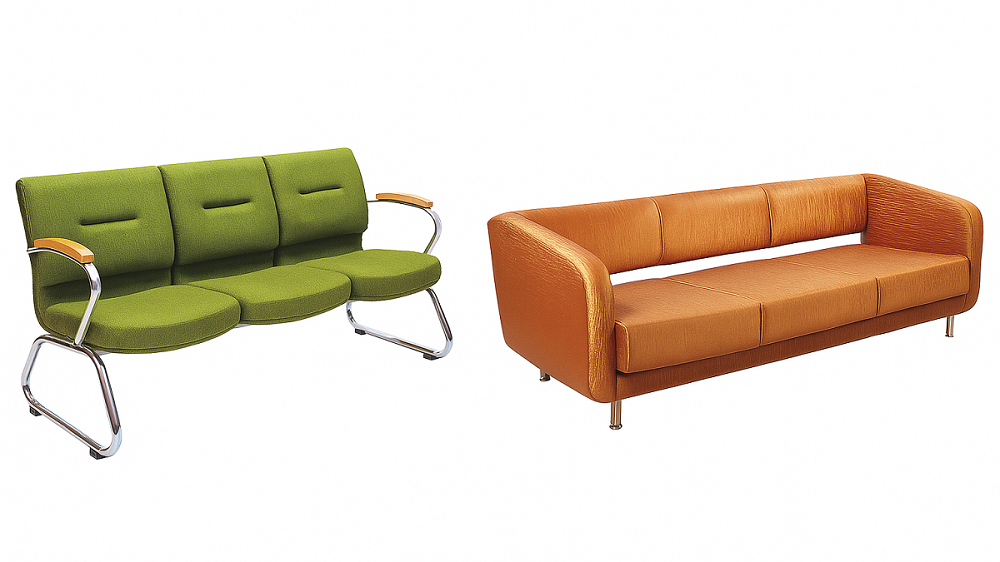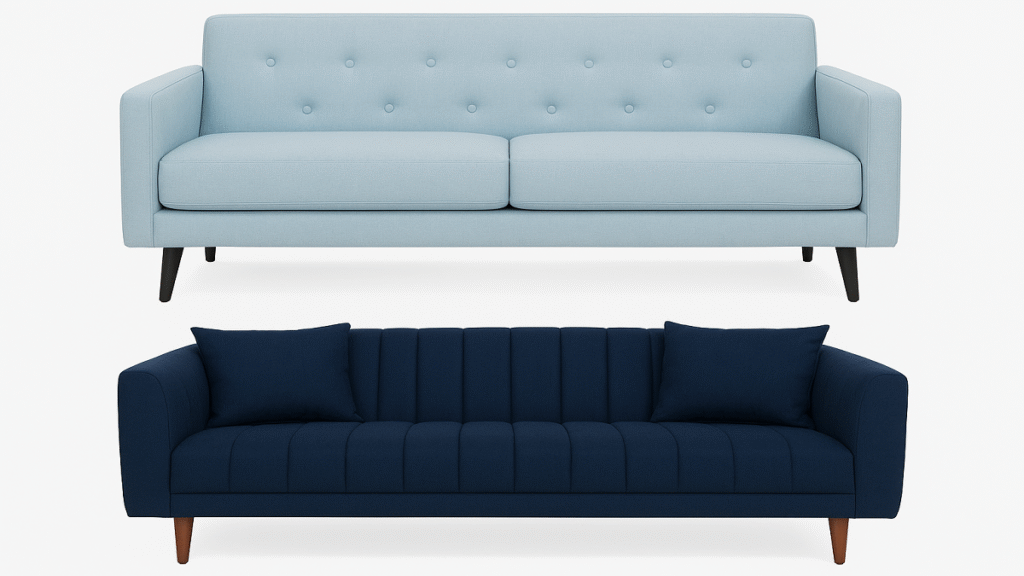In today’s dynamic work environments and hospitality settings, the humble visitor sofa has evolved from a simple seating solution to a crucial element of interior design and functionality. Whether gracing the reception area of a corporate office, providing comfort in a medical waiting room, or enhancing the welcoming atmosphere of a hotel lobby, visitor sofas play an essential role in creating positive first impressions and ensuring guest comfort.
Understanding the Visitor Sofa
A visitor sofa is specifically designed to accommodate guests, clients, and visitors in various professional and public settings. Unlike residential furniture, these sofas must balance comfort with durability, aesthetics with practicality, and style with maintenance requirements. They serve as the silent ambassadors of hospitality, communicating values of professionalism, care, and attention to detail before a single word is spoken.
The modern visitor sofa transcends traditional boundaries, appearing in diverse environments from corporate boardrooms to healthcare facilities, from educational institutions to retail spaces. Each setting demands specific considerations in terms of design, materials, and functionality, making the selection process both critical and complex.
Key Features and Design Considerations
Durability and Construction
Commercial-grade visitor sofas are built to withstand significantly more wear and tear than their residential counterparts. High-quality hardwood frames, reinforced joints, and commercial-grade springs form the foundation of these pieces. The construction must account for frequent use by individuals of varying sizes and weights, often requiring weight capacities that exceed standard home furniture specifications.
Fabric and Material Selection
The choice of upholstery material dramatically impacts both the sofa’s longevity and maintenance requirements. Commercial fabrics are rated for durability using the Wyzenbeek test, with most visitor sofas requiring materials rated for at least 30,000 double rubs. Popular options include high-grade polyester blends, vinyl, leather, and specialized contract fabrics that offer stain resistance and antimicrobial properties.
Leather remains a premium choice for executive settings, offering sophistication and relatively easy maintenance. However, synthetic alternatives have advanced significantly, providing leather-like aesthetics with enhanced durability and lower costs. For healthcare environments, antimicrobial fabrics have become increasingly important, especially following global health concerns.
Ergonomic Design
Modern visitor sofas prioritize ergonomic principles to ensure comfort during extended waiting periods. Proper seat depth, lumbar support, and armrest positioning contribute to user comfort and can significantly impact the overall experience of visitors. The seat height typically ranges from 17 to 19 inches to accommodate users of various heights comfortably.
Types of Visitor Sofas
Traditional Three-Seater Sofas
The classic three-seater remains the most common choice for reception areas and waiting rooms. These sofas typically measure 72 to 84 inches in length and can accommodate three adults comfortably. They work well in spacious environments where creating a homey, welcoming atmosphere is desired.
Modular Seating Systems
Modular systems offer flexibility in configuration, allowing facilities to adapt their seating arrangements based on changing needs. These systems can be reconfigured to create various layouts, from linear arrangements to curved or L-shaped configurations. This adaptability makes them particularly valuable in dynamic environments where space usage may evolve over time.
Loveseat and Two-Seater Options
For smaller spaces or more intimate settings, two-seater sofas provide an excellent balance between comfort and space efficiency. These are particularly popular in professional services offices, small medical practices, and boutique retail environments where creating a more personal atmosphere is desired.
Bench-Style Seating
Clean-lined bench sofas offer a contemporary aesthetic while maximizing seating capacity. These designs work particularly well in modern architectural settings and can be more cost-effective when seating large numbers of visitors is required.
Industry-Specific Applications
Corporate Environments
In corporate settings, visitor sofas serve multiple functions beyond simple seating. They contribute to brand image, reflect company culture, and can influence client perceptions before meetings begin. Executive-level visitor sofas often feature premium materials like top-grain leather and sophisticated design details that align with corporate aesthetics.
The trend toward more casual corporate environments has introduced sofas with contemporary designs, bold colors, and innovative materials. These pieces help create environments that feel less formal while maintaining professionalism.
Healthcare Facilities
Healthcare waiting areas present unique challenges for visitor seating. Sofas must be easy to clean and disinfect, comfortable for extended waiting periods, and constructed from materials that can withstand frequent cleaning with commercial-grade disinfectants. Many healthcare facilities now specify antimicrobial fabrics and seamless designs that minimize areas where bacteria might accumulate.
The psychological impact of comfortable, attractive seating in healthcare environments cannot be understated. Well-designed visitor sofas can help reduce patient anxiety and create a more welcoming atmosphere during stressful medical visits.
Educational Institutions
Schools, colleges, and universities utilize visitor sofas in various settings, from administrative offices to student lounges. These environments require particularly durable construction due to heavy use and the need for easy maintenance. Educational settings often favor bright colors and contemporary designs that appeal to younger users while maintaining durability standards.
Hospitality Industry
Hotels, resorts, and other hospitality venues use visitor sofas to create welcoming lobby areas and lounge spaces. These applications often emphasize luxury materials and sophisticated designs that reflect the establishment’s brand and target demographic. The ability to create comfortable conversation areas can significantly enhance the guest experience.
Selection Criteria
Space Planning
Proper space planning ensures that visitor sofas enhance rather than overwhelm their environment. Industry standards suggest allowing at least 30 inches of walkway space around seating areas, with 42 inches preferred for high-traffic areas. The scale of the sofa should complement the room’s proportions, with larger spaces accommodating bigger pieces and smaller areas benefiting from more compact designs.
Traffic Volume and Usage Patterns
Understanding how many people will use the seating and for what duration helps determine the appropriate grade of construction and materials. High-traffic areas require commercial-grade construction and heavy-duty fabrics, while lower-traffic environments might accommodate standard commercial-grade options.
Maintenance Requirements
Different materials and designs require varying levels of maintenance. Facilities with limited maintenance staff might prioritize easy-to-clean materials and simple designs, while those with dedicated housekeeping teams might opt for more luxurious materials that require specialized care.
Budget Considerations
Visitor sofas represent a significant investment, with quality pieces ranging from several hundred to several thousand dollars. However, the total cost of ownership should include maintenance, replacement frequency, and the impact on user experience. Higher-quality sofas often provide better value over their lifetime despite higher initial costs.
Emerging Trends and Innovations
Sustainable Materials
Environmental consciousness has driven demand for visitor sofas constructed from sustainable materials. Recycled fabrics, certified sustainable wood, and low-emission manufacturing processes are becoming increasingly important selection criteria.
Technology Integration
Some modern visitor sofas incorporate technology features such as built-in USB charging ports, wireless charging pads, and even integrated tablets for visitor check-in or entertainment. These features can enhance the user experience while adding functional value.
Antimicrobial Treatments
The global pandemic has accelerated the adoption of antimicrobial fabric treatments and easy-to-disinfect materials. These innovations help maintain hygiene standards while providing peace of mind for both facility managers and users.
Biophilic Design Elements
The integration of natural materials, colors, and textures that connect users with nature has gained popularity. These design elements can help reduce stress and create more pleasant waiting environments.
Maintenance and Care
Regular Cleaning Protocols
Establishing regular cleaning protocols extends the life of visitor sofas and maintains their appearance. Daily spot cleaning, weekly thorough cleaning, and periodic deep cleaning help preserve both aesthetics and hygiene. The specific cleaning requirements depend on the upholstery material and the environment’s usage patterns.
Professional Maintenance Services
Many facilities benefit from professional upholstery cleaning services, particularly for valuable pieces or those in high-traffic areas. Professional services can address deep stains, provide protective treatments, and assess the overall condition of the furniture.
Rotation and Replacement Planning
Strategic rotation of modular pieces can help ensure even wear patterns, extending the overall life of the seating system. Facilities should also plan for eventual replacement, with quality visitor sofas typically lasting 7-15 years depending on usage and maintenance.
Future Outlook
The visitor sofa industry continues to evolve in response to changing workplace dynamics, health concerns, and environmental consciousness. Remote work trends have influenced commercial furniture design, with many pieces now designed to create more residential-like comfort in professional settings.
Smart building integration may lead to visitor sofas with sensors that monitor usage patterns, helping facility managers optimize space utilization and maintenance schedules. Additionally, the growing emphasis on mental health and wellness in built environments will likely drive further innovations in ergonomic design and stress-reducing aesthetics.
The visitor sofa represents far more than simple seating furniture. It embodies an organization’s commitment to visitor comfort, reflects brand values, and contributes significantly to the overall user experience. Whether selecting sofas for a corporate headquarters, healthcare facility, or educational institution, careful consideration of durability, comfort, aesthetics, and maintenance requirements ensures that these pieces will serve their intended purpose effectively for years to come.
Visit Us in Agra
Furniture House Group
# Address: [G-5, Kamla Nagar, Bypass Road, Agra, Uttar Pradesh, 282004]
# Contact: [+91 9758273215]
# Website: [furniturehousegroup.com]
# Open: Monday – Sunday, 10:00 AM to 8:00 PM
# Close: Tuesday


